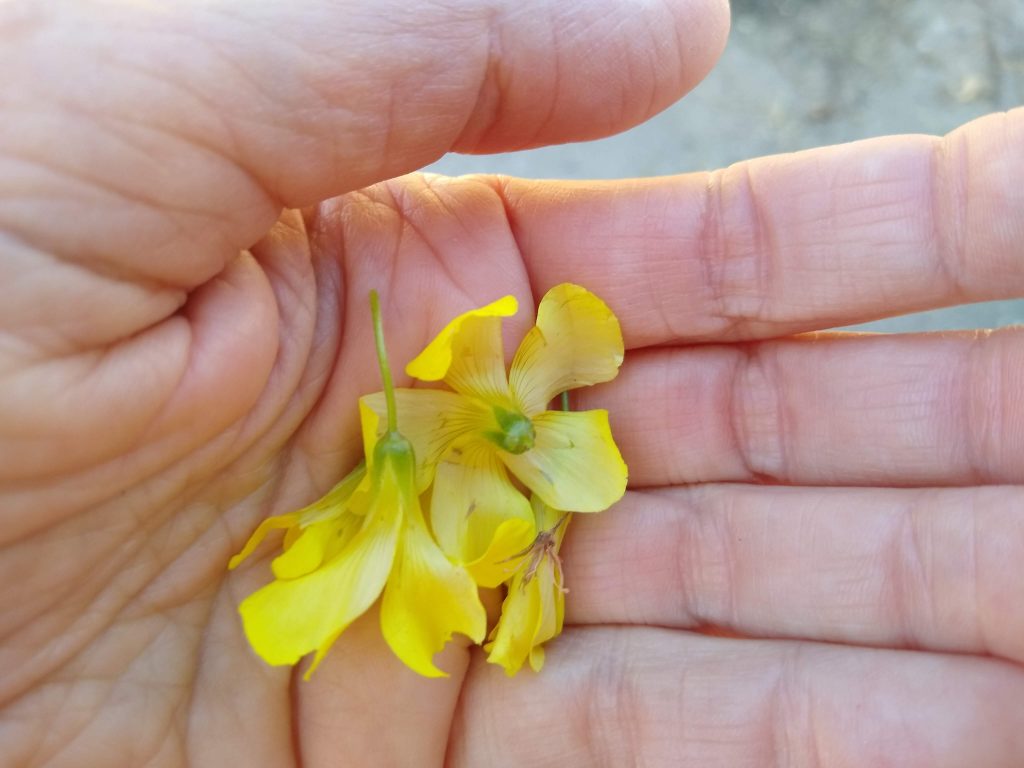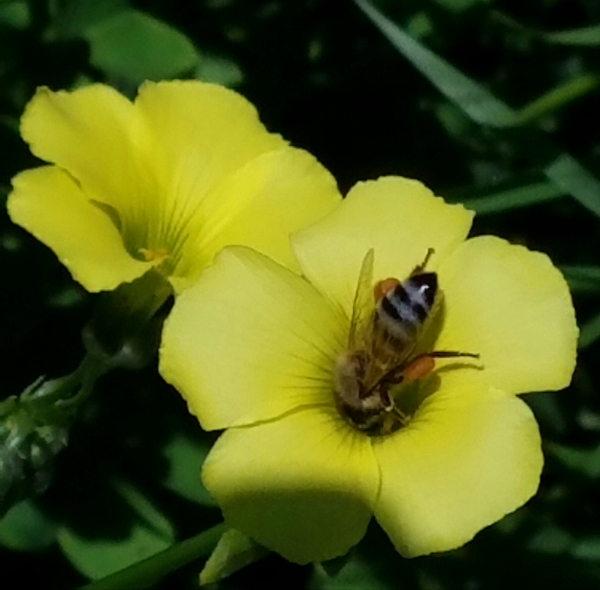My standard yellow dye plants are Fennel (for wool) and Oxalis (cotton, wool, soy silk).


The first Oxalis opened up a few days ago. Locally the Fennel produces through most through what would be our Summer months (Pacific, southwest USA), starts to dry and dies out around Autumn. Following that the Wood Sorrel/Oxalis starts up, runs rampant through the Winter into Spring and dies out towards summer when the Fennel starts up again.
This being southern California the seasons are hot and dry, and really hot and dry punctuated by a furious rain storm or two. In fact, left to itself I am guessing much this area would be more desert like. (In case one forgets this idea, having a car breakdown in the San Fernando Valley, in July, around high noon, is a heck of a wakeup call…) Most of the years I grew up here the weather was at least consistant with itself but lately has gotten incresingly volitile (and just plain wierd).
Otherwise, the cotton is still opening and some smaller (cotton) plants have been started for next year.



























